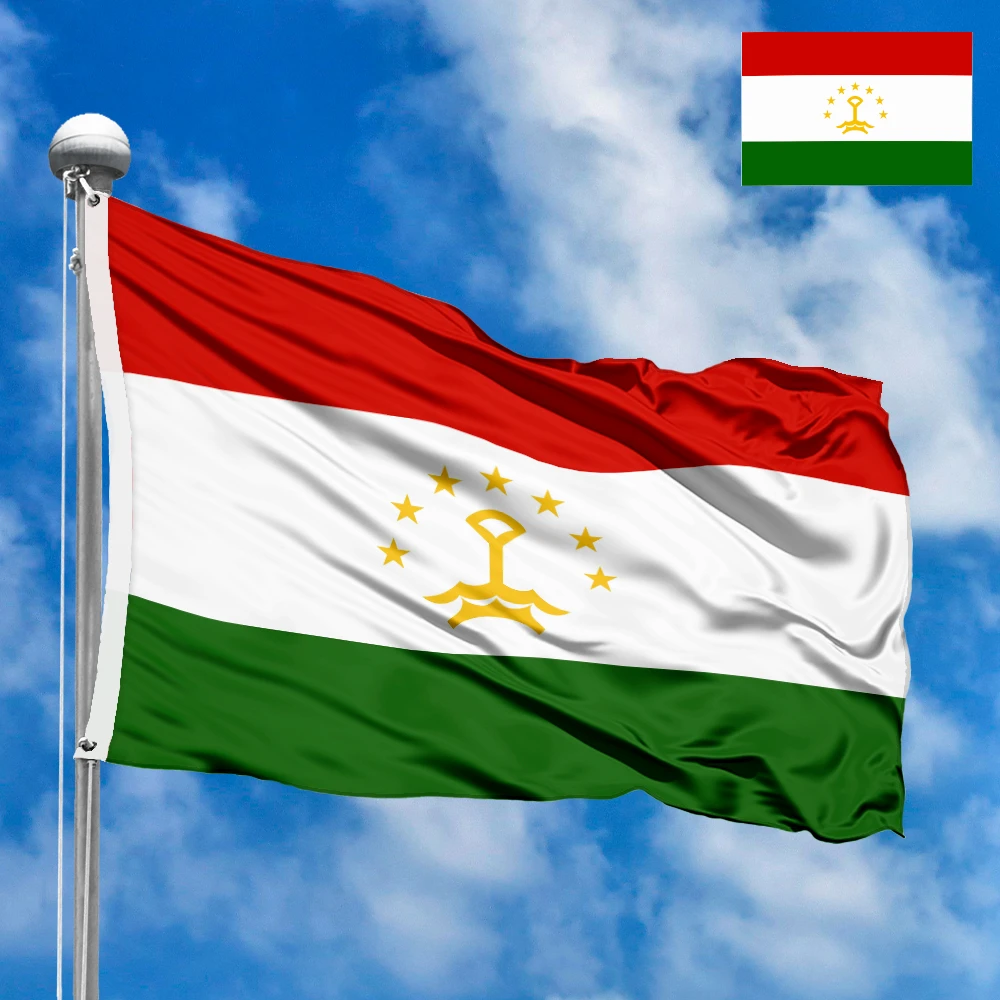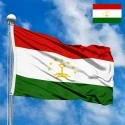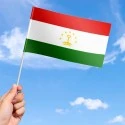The national flag of Tajikistan is a powerful symbol of the nation's rich history, cultural heritage, and aspirations for the future. Adopted on November 24, 1992, it was one of the first national symbols of the newly independent Republic of Tajikistan after the collapse of the Soviet Union. The flag's design and colors are deeply rooted in Persian and Tajik traditions, reflecting a blend of ancient symbolism and modern statehood.
Design and Dimensions
The flag of Tajikistan features a distinctive horizontal tricolor design, with three stripes of unequal width. From top to bottom, the colors are red, white, and green. The central white stripe is significantly wider than both the red and green stripes, approximately one-and-a-half times wider. In the center of the white stripe, a stylized crown surmounted by seven stars is depicted in gold. The standard proportions of the flag are 1:2 (height to width), making it a relatively elongated flag, a common feature among flags of former Soviet republics. This precise arrangement and ratio contribute to its unique visual identity.
Symbolism of the Colors and Emblem
Each element of the Tajik flag carries profound symbolic meaning:
-
Red: The uppermost red stripe traditionally symbolizes unity and brotherhood among all the peoples of the world. It also represents the valor, courage, and sacrifices of those who fought for the nation's independence and freedom. In a broader historical context, red is often associated with the working class and revolution, linking back to the Soviet era, but reinterpreted to signify the dawn of a new era for Tajikistan.
-
White: The central and broadest white stripe embodies purity, morality, and the snow-capped mountains that dominate Tajikistan's landscape. Crucially, white also signifies cotton, which has historically been a cornerstone of the Tajik economy and an important agricultural product. It represents peace and prosperity, reflecting the nation's desire for a calm and stable future.
-
Green: The lowermost green stripe represents fertility, prosperity, and the country's agricultural wealth, particularly its valleys and pastures. It signifies the abundance of nature and the hope for a bountiful future. Green is also strongly associated with Islamic culture, a significant part of Tajikistan's heritage.
The gold emblem in the center of the white stripe is particularly rich in symbolism:
-
Crown: The crown is a traditional Tajik symbol, representing the Tajik people themselves, as the word "Tajik" (тоҷик) is historically linked to the Persian word "taj" (تاج), meaning "crown." It also symbolizes the sovereignty and independence of the state.
-
Seven Stars: The seven stars have multiple layers of meaning. They are said to represent the seven historical regions of Tajikistan or the seven legendary stars that rise above the Pamir Mountains. Furthermore, in Persian mythology and Sufism, the number seven is considered auspicious, symbolizing perfection, happiness, and divine enlightenment. This combination highlights both the geographical diversity and spiritual aspirations of the nation.
A Journey Through History: Creation and Adoption
The territory of modern Tajikistan has a long and complex history, marked by various empires and cultural influences. Before the adoption of the current flag, Tajikistan, as a Soviet Socialist Republic (SSR), used a flag that reflected its status within the USSR. The Tajik SSR flag was predominantly red, featuring a hammer and sickle and a gold-bordered white stripe with a narrow green stripe beneath it.
With the dissolution of the Soviet Union in 1991, Tajikistan declared its independence. The need for new national symbols, distinct from its Soviet past, became paramount. The new national flag was officially adopted on November 24, 1992, a crucial moment during a period of civil unrest. The design was the result of a national competition and careful consideration of historical and cultural elements unique to Tajikistan. It intentionally moved away from overt communist symbols while retaining some of the color palette, but reinterpreting their meanings to align with a sovereign Tajik identity.
Significance for the Inhabitants
For the people of Tajikistan, the national flag is a source of immense pride and a unifying symbol. It represents their journey from a Soviet republic to an independent nation, embodying their shared heritage, resilience, and aspirations for peace and prosperity. The flag is displayed prominently on national holidays, at government buildings, schools, and public events, serving as a constant reminder of their national identity and sovereignty. It fosters a sense of collective belonging and reinforces the values of independence, unity, and cultural preservation that are central to the Tajik national character.
Interesting Facts
-
One of the Last to Adopt: Tajikistan was among the last former Soviet republics to adopt a new national flag, doing so a year after its independence. This timing was influenced by the internal political situation and the ongoing civil war.
-
Persian Influence: The design and symbolism, particularly the crown and seven stars, strongly reflect the deep Persian heritage of the Tajik people, distinguishing it from other Central Asian flags which often emphasize Turkic symbolism.
-
Unique Proportion: The 1:2 proportion is shared with some other post-Soviet states, but the unique central emblem and unequal stripe widths make it distinctly Tajik.
-
National Flag Day: While not explicitly mentioned in the prompt, many countries have a National Flag Day. In Tajikistan, November 24th is celebrated as the Day of the State Flag, emphasizing its importance in the national calendar.
In the demonstration images, full-size flags are shown with proportions of 2:3, and hand-held flags with proportions of 1:2.






 Waving flag
Waving flag
 Sizes:
Sizes:
 Round flag
Round flag
 Sizes:
Sizes:
 Rectangular flag 2:3
Rectangular flag 2:3
 Sizes:
Sizes: